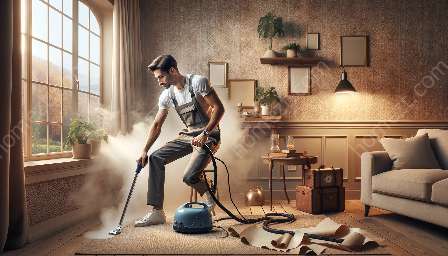When it comes to maintaining a property, plaster repair is a common task that handyman and domestic services professionals often encounter. This comprehensive guide provides insights, tips, and techniques to help them deal with plaster repair effectively.
Understanding Plaster Repair
Plaster is a versatile building material used for creating a smooth, durable finish on walls and ceilings. However, over time, plaster can develop cracks, holes, or other forms of damage, requiring repair to maintain the integrity of the surface.
Common Plaster Issues
- Cracks: Cracks are a frequent problem with plaster walls and ceilings, usually caused by settling or changes in temperature and humidity.
- Holes: Holes can occur due to accidental damage, nails or screws being removed, or other impacts on the surface.
- Bulging: This occurs when plaster separates from the lath due to moisture or improper installation.
Essential Tips for Plaster Repair
Repairing plaster requires skill and finesse. Here are some essential tips that handymen and domestic service providers should keep in mind:
- Assess the Damage: Before beginning any repair work, it's crucial to thoroughly inspect the plaster surface to identify the extent and nature of the damage.
- Clean the Area: Ensure the damaged area is clean and free from debris before commencing repairs. Any loose plaster or dust should be removed.
- Choose the Right Materials: Select the appropriate repair materials, such as plaster, joint compound, or patching compound, based on the type and severity of the damage.
- Use Proper Technique: Applying the repair materials accurately and using the right tools and techniques is essential for achieving a seamless finish.
- Allow Sufficient Drying Time: Adequate drying time is essential to ensure that the repair materials bond effectively with the existing plaster.
Tools for Plaster Repair
Handymen and domestic service providers should have the following tools in their arsenal for efficient plaster repair:
- Trowel: Used for applying and smoothing repair materials.
- Utility Knife: Essential for cutting and shaping the repair materials.
- Plaster Hawk: This tool holds the repair material and allows for easy application to the damaged area.
- Sanding Block: Used for smoothing the repaired area before painting or finishing.
Finishing and Repainting
Once the plaster repair is complete, a handyman or domestic service professional should ensure that the surface is properly finished and repainted to match the surrounding area. This final step adds a polished look to the repair work and ensures a seamless blend with the existing plaster.
Providing Professional Plaster Repair Services
For homeowners who prefer to rely on skilled professionals for plaster repair, a handyman or domestic service provider equipped with the necessary knowledge and tools can offer a valuable solution. By carefully assessing, repairing, and finishing plaster surfaces, they can ensure a high-quality, long-lasting result for their clients, contributing to the overall maintenance and aesthetic appeal of the property.
Overall, mastering the art of plaster repair is a valuable asset for handymen and domestic service providers, allowing them to address this common issue efficiently and enhance their range of services for property owners.






























